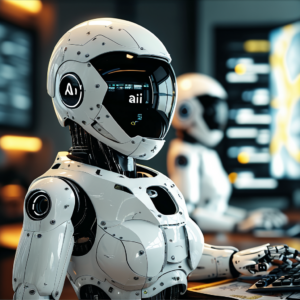
A Ripple Effect from an Investment
In May 2024, Singapore-based startup Tensorplex Labs announced a strategic investment from Yzi Labs, causing its Bittensor subnet project Dojo’s token to surge 500% in a single day, making it a hot topic in decentralized AI. Founded in 2022, Tensorplex Labs rose from obscurity to become a core player in the Bittensor ecosystem in just two years. What did this company do right? The answer lies in its full-stack approach—from DeFi infrastructure to AI applications.
From Zero to One: Rebuilding Bittensor’s Financial Framework
In 2023, the Bittensor ecosystem was like untapped land. While the TAO token attracted tech enthusiasts with its decentralized machine learning concept, average users were deterred by complex staking processes. Tensorplex Labs’ first breakthrough came with liquid staking.The team launched stTAO—an ERC-20 standard liquid staking derivative—allowing holders to participate in network validation without needing a Substrate wallet. This design bridged the technical gap between Ethereum and Bittensor: users stake TAO to earn stTAO tokens, yielding 13% annualized returns while enabling trading on DEXs like Uniswap. Coupled with a threshold-signature-based cross-chain bridge that minimized custodial risks, this move rapidly activated the market, driving staking TVL to over $30 million within three months, accounting for 42% of Bittensor’s total staking volume.The subsequent lending protocol, TaoBank, further unlocked staked asset value. Users could borrow interest-free loans against stTAO collateral, with loan limits dynamically tied to collateral ratios to avoid liquidation cascades. This “staking-lending-reinvestment” flywheel infused Bittensor with traditional financial liquidity management logic.
Backprop: The Ecosystem’s “Swiss Army Knife”
If DeFi products are Bittensor’s veins, exchanges are its arteries. In March 2024, Tensorplex Labs launched Backprop, a super-app integrating trading, data analytics, and on-chain monitoring.Unlike competitors like HotkeySwap, Backprop targeted “newbie” pain points from day one. Its interface combined an order book and price charts on the left with subnet hash rate distributions, miner revenue rankings, and model training progress on the right. An early user described it as “stuffing Coinbase and Nansen into one product.” This “All-in-One” design lowered entry barriers—new users could complete market research and execute trades without switching platforms.Critically, Backprop deeply integrated Bittensor’s AI features. When users searched for “high-APY subnets,” the system automatically invoked Subnet 9’s machine learning model to generate investment recommendations based on historical returns and risk factors. This “AI-assisted decision-making” helped Backprop hit $8 million in daily trading volume within two months, capturing 35% of the ecosystem’s trading share.
From Model Training to Real-World Impact
Among Bittensor’s 64 subnets, Tensorplex Labs participated in validating 60, but this was just the tip of the iceberg. In 2023, the team made waves in Subnet 19’s Macrocosmos AI pre-training competition—its Sumo-T9-7B model outperformed mainstream rivals like Llama 2 in text generation tasks, with 23% faster inference speeds.Behind this victory was Tensorplex’s mastery of decentralized compute. The team split training tasks into 120,000 micro-jobs distributed globally via Bittensor, then used smart contracts to verify results. This “distributed training-centralized consolidation” framework slashed model iteration cycles from two weeks to three days.Technological breakthroughs soon translated to real-world applications. In early 2024, Tensorplex launched Stream—a RAG (Retrieval-Augmented Generation)-powered crypto assistant. The product scraped 300+ hours of industry podcasts daily, generating market summaries via speech recognition and semantic analysis. Remarkably, Stream could mimic top analysts’ styles: “TAO’s staking yield now negatively correlates with Nasdaq AI stocks, suggesting…” This democratization of expertise helped Stream reach 200+ crypto communities.
Human-AI “Co-Evolution”
If earlier products were tactical wins, the Dojo subnet marked Tensorplex’s ecosystem closure. This Yzi Labs-backed project is a human-AI collaborative data workshop.Its mechanics are philosophical: Developers generate synthetic tasks (e.g., image optimization, game physics feedback) via LLMs, which human validators then quality-check. For example, in “predicting ETH price swings,” AI creates 100 market scenarios, while humans label those aligning with historical patterns. To combat cheating, Dojo introduced a “contributor reputation chain”—each validator’s accuracy is permanently recorded, with higher earning more rewards.This design spawned a data flywheel. By May 2024, Dojo had collected over 3 million human-annotated data points, 12% of which improved open-source models like Stable Diffusion. More notably, its economic model allocates 50% of block rewards to data contributors, 30% to miners, and 20% to protocol development. This “contribute-to-earn” fueled DOJO’s 500% price surge post-Yzi Labs’ investment, pushing its market cap above $120 million.
Bittensor’s “Calm Prosperity”
Tensorplex Labs’ rise reflects a subtle shift in decentralized AI. Unlike 2023’s blind “AI narrative” frenzy, the market now prioritizes technical execution. Builders like Tensorplex prove that decentralized networks can host not just model training but also real value-exchange scenarios.But challenges remain. Dojo’s 300% token volatility exposes governance-speculation tensions, while Backprop’s AI-assisted trading risks regulatory scrutiny as “unlicensed advisory services.” As Tensorplex’s founder noted: “We’re paving roads in uncharted territory, battling technical inertia and market bubbles.”For average investors, this experiment’s value lies not in short-term gains but in witnessing a new era’s prologue—where AI escapes Big Tech’s server farms, and data value returns to individuals. Tensorplex and Bittensor’s exploration may well rewrite the rules of human-machine collaboration.



